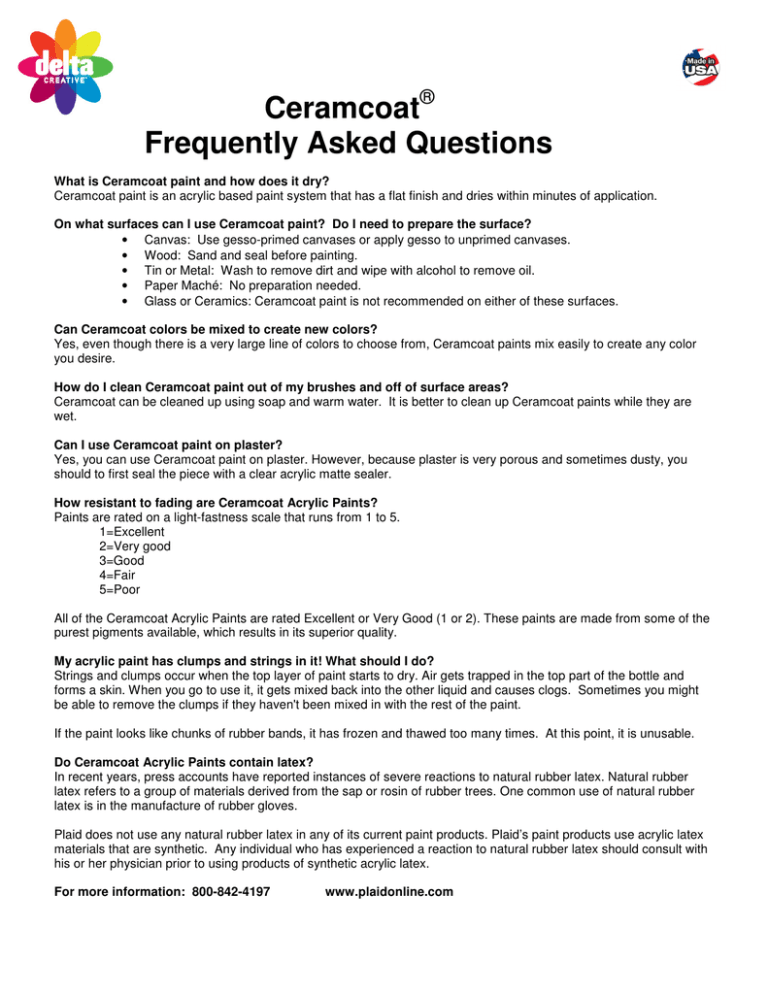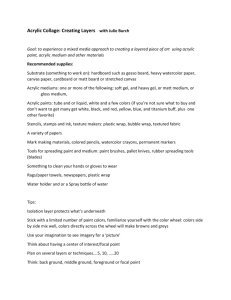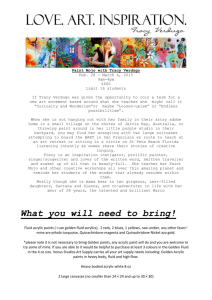Ceramcoat Frequently Asked Questions
advertisement

Ceramcoat® Frequently Asked Questions What is Ceramcoat paint and how does it dry? Ceramcoat paint is an acrylic based paint system that has a flat finish and dries within minutes of application. On what surfaces can I use Ceramcoat paint? Do I need to prepare the surface? • Canvas: Use gesso-primed canvases or apply gesso to unprimed canvases. • Wood: Sand and seal before painting. • Tin or Metal: Wash to remove dirt and wipe with alcohol to remove oil. • Paper Maché: No preparation needed. • Glass or Ceramics: Ceramcoat paint is not recommended on either of these surfaces. Can Ceramcoat colors be mixed to create new colors? Yes, even though there is a very large line of colors to choose from, Ceramcoat paints mix easily to create any color you desire. How do I clean Ceramcoat paint out of my brushes and off of surface areas? Ceramcoat can be cleaned up using soap and warm water. It is better to clean up Ceramcoat paints while they are wet. Can I use Ceramcoat paint on plaster? Yes, you can use Ceramcoat paint on plaster. However, because plaster is very porous and sometimes dusty, you should to first seal the piece with a clear acrylic matte sealer. How resistant to fading are Ceramcoat Acrylic Paints? Paints are rated on a light-fastness scale that runs from 1 to 5. 1=Excellent 2=Very good 3=Good 4=Fair 5=Poor All of the Ceramcoat Acrylic Paints are rated Excellent or Very Good (1 or 2). These paints are made from some of the purest pigments available, which results in its superior quality. My acrylic paint has clumps and strings in it! What should I do? Strings and clumps occur when the top layer of paint starts to dry. Air gets trapped in the top part of the bottle and forms a skin. When you go to use it, it gets mixed back into the other liquid and causes clogs. Sometimes you might be able to remove the clumps if they haven't been mixed in with the rest of the paint. If the paint looks like chunks of rubber bands, it has frozen and thawed too many times. At this point, it is unusable. Do Ceramcoat Acrylic Paints contain latex? In recent years, press accounts have reported instances of severe reactions to natural rubber latex. Natural rubber latex refers to a group of materials derived from the sap or rosin of rubber trees. One common use of natural rubber latex is in the manufacture of rubber gloves. Plaid does not use any natural rubber latex in any of its current paint products. Plaid’s paint products use acrylic latex materials that are synthetic. Any individual who has experienced a reaction to natural rubber latex should consult with his or her physician prior to using products of synthetic acrylic latex. For more information: 800-842-4197 www.plaidonline.com




![[Agency] recognizes the hazards of lead](http://s3.studylib.net/store/data/007301017_1-adfa0391c2b089b3fd379ee34c4ce940-300x300.png)

